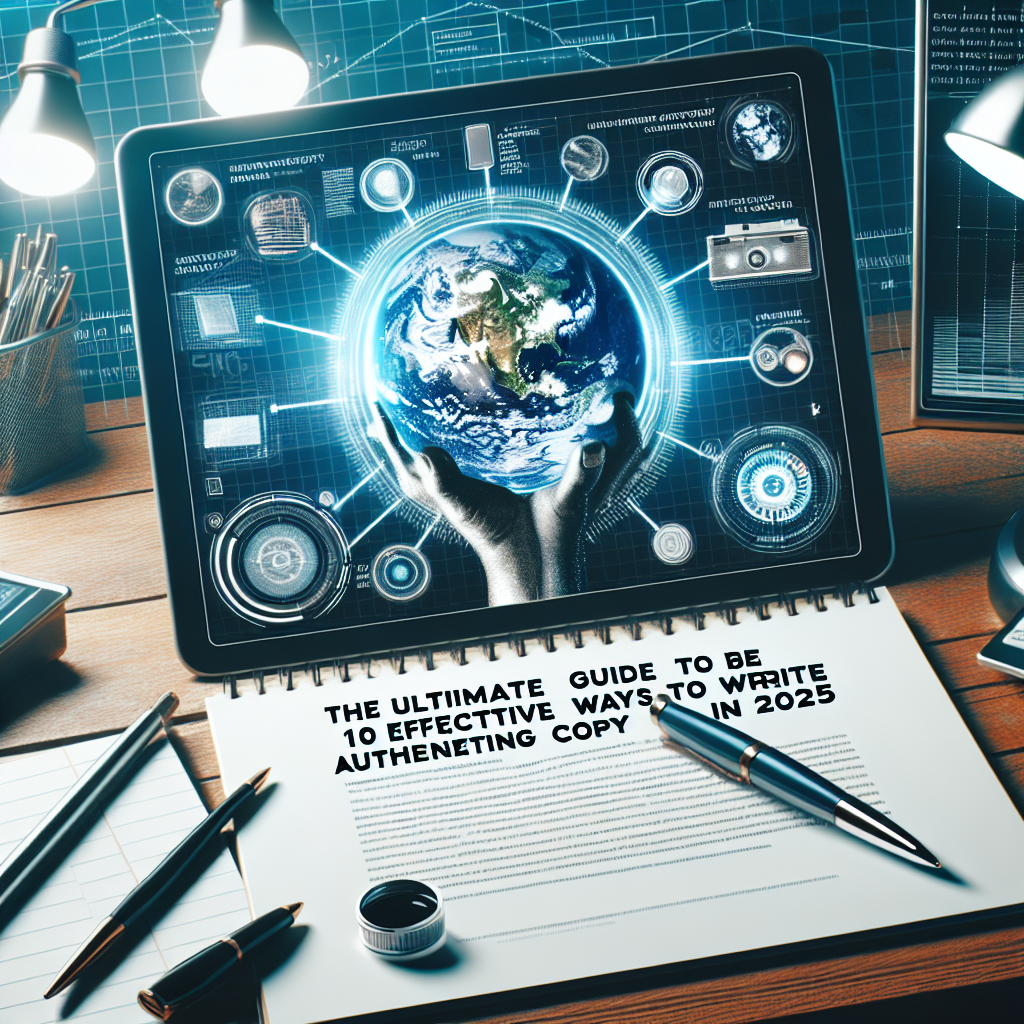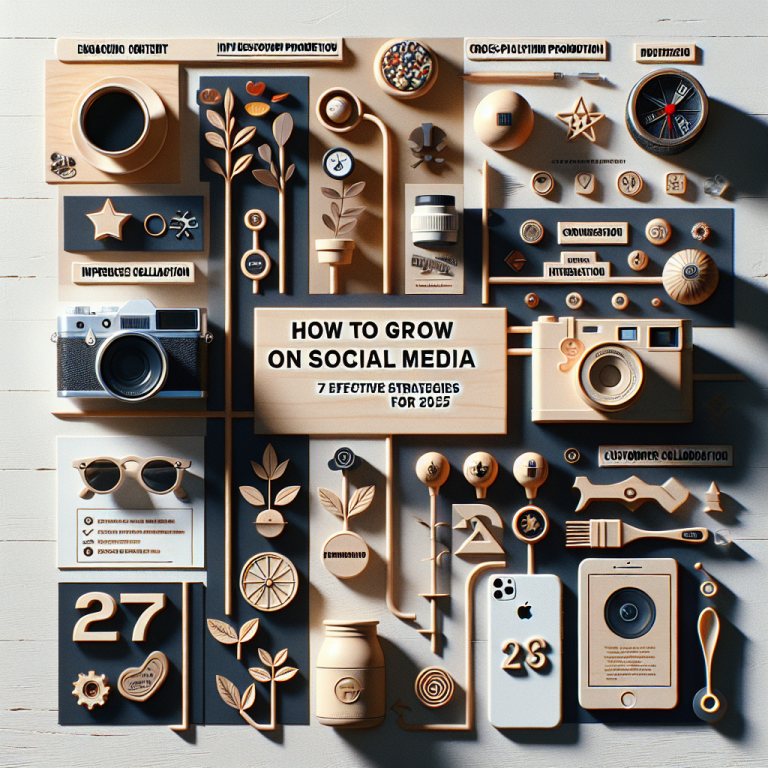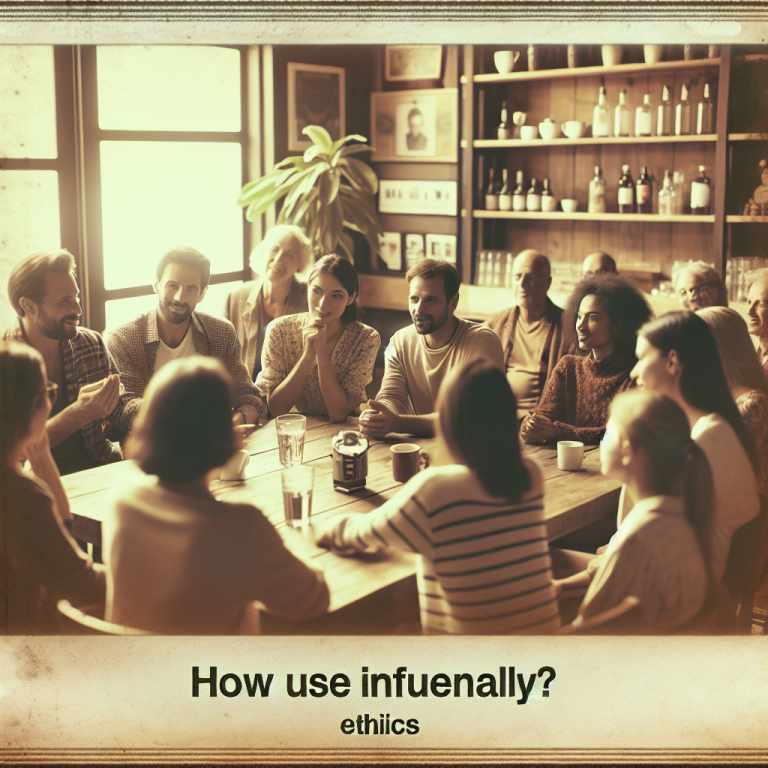The Ultimate Guide to 10 Effective Ways to Write Authentic Marketing Copy in 2025
Table of Contents
- 1. Prioritize True Storytelling
- 2. Understand Your Audience Deeply
- 3. Use a Conversational Tone
- 4. Be Transparent and Honest
- 5. Leverage Emotional Appeal
- 6. Focus on Benefits, Not Just Features
- 7. Incorporate Social Proof
- 8. Avoid Jargon and Complex Language
- 9. Test and Refine Your Copy
- 10. Stay Authentic to Your Brand Voice
1. Prioritize True Storytelling
Authentic stories captivate your audience
In 2025, storytelling remains one of the most powerful tools to connect with customers. Sharing genuine stories about your brand, products, or customers creates an emotional bond that generic advertisements struggle to achieve. People remember stories more than facts, making them a crucial part of learning how to write authentic marketing copy.
For example, a small coffee shop can share the story of how they source beans directly from farmers, emphasizing transparency and commitment. Such stories resonate because they are real and relatable. Use your brandâs journey or customer success stories as a foundation for compelling, authentic copy.
Research indicates that stories enhance memory and emotional engagement, which translates into higher conversion rates. In 2025, brands that focus on storytelling see better customer loyalty, making it an essential element of how to write authentic marketing copy.
Tips for effective storytelling
Start with a real problem or challenge faced by your customers, then demonstrate how your product or service provided a solution. Keep your narrative genuine, avoiding exaggerated claims. Including real data, customer testimonials, and behind-the-scenes insights can boost credibility.
Remember, effective storytelling is about authenticity, not embellishment. Your goal is to foster trust and build a community around your brand by showing the real human side of your business in your marketing copy.
2. Understand Your Audience Deeply
Conduct thorough audience research
Knowing your audience is fundamental to how to write authentic marketing copy. In 2025, advanced data analytics enable brands to gain deep insights into customer preferences, behaviors, and values. Use surveys, social listening tools, and customer feedback to build detailed personas.
For instance, if your target audience values sustainability, your marketing should reflect genuine eco-friendly practices, aligning your message with their core beliefs. Authenticity stems from aligning your brandâs values with those of your audience, making your copy more credible and engaging.
Regularly updating your customer persona allows for tailored messaging that resonates. The more you understand your audienceâs needs and desires, the easier it becomes to craft authentic, persuasive marketing copy.
Segment your audience for personalized messaging
Segmentation allows you to customize your messaging for different groups, increasing relevance. The more personalized your communication, the more authentic it feels to each segment, reflecting a genuine understanding of their unique preferences.
For example, email campaigns that address specific pain points or interests demonstrate that your brand truly understands the customer. Use behavioral data to adjust your messaging and increase authenticity across various touchpoints.
This targeted approach shows customers that your brand values their individuality, strengthening trust and loyalty over time.
3. Use a Conversational Tone
Write as you speak
Adopting a conversational tone is essential for how to write authentic marketing copy. In 2025, consumers prefer brands that feel approachable and relatable. Use simple language, questions, and informal expressions to mirror everyday speech.
Instead of corporate jargon, opt for a friendly, genuine voice. For example, instead of saying, “Our solutions optimize operational efficiency,” try, “We help you get more done in less time.” This makes your copy feel authentic and accessible.
This approach fosters a sense of community, encouraging customers to engage more openly with your brand.
Engage your audience with relatable language
Relatability is key to authenticity. Share stories, insights, and humor that align with your audienceâs lifestyle and values. Personal pronouns and direct questions create a dialogue, making consumers feel seen and heard.
In 2025, personalized communication is no longer optional â itâs expected. Consumers want brands that speak to them like a trusted friend, which can only be achieved with a conversational, authentic tone in your marketing copy.
Practical tip: Test your content with real users to see if it resonates. Adjust based on feedback to ensure your voice remains genuine and approachable.
4. Be Transparent and Honest
Build trust through transparency
Transparency is vital for how to write authentic marketing copy that builds long-term trust. In 2025, consumers are increasingly skeptical of exaggerated claims, so honesty is your best asset. Share both the strengths and limitations of your products or services openly.
For example, if your product takes longer to deliver, communicate this upfront rather than hiding it. This honesty demonstrates that you value your customersâ time and trust, fostering a more genuine relationship.
Independent research shows that brands with transparent communication experience higher customer loyalty and positive reviews. In a crowded marketplace, embracing transparency can make your brand stand out as authentic and trustworthy.
Show behind-the-scenes honesty
Offering glimpses into your companyâs operations, values, or even mistakes can humanize your brand. Sharing behind-the-scenes content or acknowledging errors shows authenticity and a commitment to improvement.
Transparency doesn’t mean oversharing, but rather providing enough information to reassure your audience of your integrity. Use your marketing copy to tell honest stories about your journey, challenges, and lessons learned.
This level of openness helps differentiate your brand as genuine and caring, which resonates with audiences in 2025.
5. Leverage Emotional Appeal
Connect on a human level
Emotional connection is a cornerstone of how to write authentic marketing copy. In 2025, data shows that brands appealing to emotions outperform rational appeals by 31%. Share stories that evoke feelings like hope, pride, or compassion to deepen this bond.
For instance, highlighting how your product helps a family stay connected or supports a cause you believe in can inspire loyalty. Authenticity comes from genuine emotional storytellingânot manipulation.
This emotional engagement encourages customers not just to buy, but to become advocates for your brand.
Use visuals and language to evoke feelings
Complement your copy with powerful visuals, testimonials, and heartfelt language. Real stories and genuine images amplify emotional impact, making your message more authentic.
In marketing, authenticity is reinforced when your visuals align with your words, creating a cohesive narrative. Always aim for sincerity over sensationalism to maintain credibility in your messaging.
Practical tip: Incorporate authentic customer stories or user-generated content to build emotional trust authentically.
6. Focus on Benefits, Not Just Features
Highlight real value
When learning how to write authentic marketing copy, emphasizing benefits over features is key. Instead of listing technical specs, focus on how your offering improves your customer’s life in 2025.
For example, rather than stating, “Our smartphone has a 108MP camera,” say, “Capture every memory in stunning detail with the camera that adapts to your lifestyle.” This shift makes your message feel authentic and customer-centric.
Research shows that benefits-driven copy increases conversions because it addresses the underlying motivations of buyersâsolving problems and fulfilling desires.
Create an emotional payoff
Frame benefits in emotional terms to forge a deeper connection. Show how your product makes life easier, happier, or more meaningful. This approach resonates more authentically with consumers.
In 2025, less emphasis on specifications and more on user experience reflects trends in marketing that favor genuine storytelling over technical jargon.
7. Incorporate Social Proof
Show real customer experiences
Authentic reviews, testimonials, and case studies bolster your credibility and build trust. In 2025, 85% of consumers trust peer recommendations more than advertising.
Use genuine customer stories that highlight real results, avoiding overly scripted testimonials. For instance, sharing a story about how a customer saved time or money with your product underscores authenticity.
Encourage happy customers to share their experiences on social media or review sites, creating a continuous stream of social proof that feels honest and relatable.
Leverage influencer authenticity
Partnering with influencers who genuinely use and endorse your products enhances credibility. Authentic influencer marketing in 2025 means choosing voices that truly align with your brand values.
Avoid paid endorsements that seem insincere; instead, opt for long-term relationships that produce genuine testimonials. This approach ensures your marketing remains authentic and trustworthy.
Embedding testimonials or reviews within your copy can effectively reinforce trustworthiness and authenticity with potential customers.
8. Avoid Jargon and Complex Language
Simplicity is key
In 2025, clear, straightforward language is proven to be more effective for how to write authentic marketing copy. Complex jargon can alienate your audience, making your message seem impersonal or insincere.
Use everyday words that your audience understands and relate to. For example, replace “synergy” with “working together” to make your messaging more approachable and authentic.
Remember, simplicity not only improves readability but also conveys honesty and transparency, which are essential for authenticity.
Focus on clarity and honesty
Clear communication ensures your message is understood and trusted. Avoid vague statements or exaggerated claims that can damage credibility.
In 2025, consumers are increasingly savvy, and transparency through plain language fosters authenticity. Always ask: “Is this clear? Does it genuinely reflect my brand?”
Practical tip: Use bullet points, short sentences, and active voice to make your copy more engaging and authentic.
9. Test and Refine Your Copy
Gather feedback from real users
Continuous improvement is vital to mastering how to write authentic marketing copy. Regularly A/B test your messages and analyze results to see what resonates best.
Invite feedback directly from your audience via surveys or social media comments. This direct input helps you understand whether your copy truly feels genuine and trustworthy.
Remember, authenticity is not static; it evolves with your audienceâs needs and preferences.
Use analytics to inform adjustments
Modern tools provide detailed insights into how your content performs. Use these metrics to refine your messaging for better engagement and authenticity.
Focus on metrics like time on page, bounce rates, and conversion rates. These can indicate whether your copy effectively connects with your audience on an authentic level.
In 2025, data-driven decisions are essential for creating truthful, impactful marketing content.
10. Stay Authentic to Your Brand Voice
Develop a consistent voice
Your brand voice should reflect your core values and personality, making your marketing copy more authentic. In 2025, consistency across platforms builds recognition and trust.
Create brand guidelines that outline tone, style, and key messaging, ensuring everyone in your team communicates authentically. Regularly review and update your voice to keep it relevant.
Authenticity shines through when your messaging feels true to who you are, rather than trying to imitate others.
Align your messaging with your values
Authentic marketing in 2025 involves genuinely standing for something. Your copy should communicate your brandâs purpose and values honestly, not just as buzzwords.
For example, if sustainability is part of your mission, demonstrate specific actions youâre taking rather than vague commitments. This alignment adds credibility and depth to your messaging.
Consistently living your brand values through your marketing creates a genuine connection that stands the test of time.
Frequently Asked Questions
1. What are some key examples of how to write authentic marketing copy?
Effective examples include sharing real customer stories, providing transparent information about your products, and maintaining a consistent brand voice that aligns with your values.
2. How does authenticity impact marketing success in 2025?
Authentic marketing builds trust, increases engagement, and encourages customer loyalty. According to recent studies, authentic brands see a 20% higher customer retention rate in 2025 compared to less genuine competitors.
3. What are the common mistakes to avoid when trying to be authentic?
Avoid exaggerated claims, insincerity, inconsistent messaging, and overuse of jargon. Authenticity is lost when brands seem to manipulate or deceive their audience.
4. Can authenticity be maintained across multiple marketing channels?
Yes, but it requires a cohesive brand voice and consistent messaging throughout all platforms, from social media to email campaigns. Regular reviews and training help ensure authenticity remains intact.
5. How to incorporate storytelling effectively in my marketing copy?
Focus on real experiences, relate stories to your audienceâs needs, and keep narratives genuine and emotional. Authentic storytelling helps humanize your brand and forge stronger connections.
Conclusion
mastering how to write authentic marketing copy in 2025 is crucial for building genuine relationships with your customers. By prioritizing storytelling, understanding your audience, using honest language, and staying true to your brand voice, you can craft compelling content that resonates deeply. Remember, authenticity is the foundation of trust, loyalty, and long-term success. Embrace these strategies, test your approach, and continually refine your messaging to stay relevant and genuine in a competitive digital landscape.










